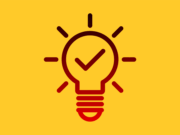Blockchain has changed its position from a one-of-a-kind solution to a revolutionary change in supply chain, logistics, healthcare, and finance industries. Due to Blockchain-as-a-Service (BaaS) market platforms, companies are now able to benefit from blockchain technology without making a considerable commitment to the ground infrastructure.
While transparency, cost savings, and productivity are some of the advantages presented by BaaS platforms, these are also exposing significant security weaknesses. Security challenges in BaaS platforms resulting from the extensive use of blockchains have been the foremost threat addressed by developers to provide effective solutions.
What is Blockchain-as-a-Service (BaaS)?
BaaS is a service that enables businesses to use a cloud solution that makes it easier to create and manage blockchain apps. The service also eliminates the need for the company to manage its regular blockchain infrastructure or the technical part of the blockchain. It presents a simple and practical solution for enterprises to incorporate blockchain technology within their business processes.
Some of the biggest names in BaaS, like IBM, Amazon Web Services (AWS), and Microsoft Azure, deliver bespoke services with developer tools for Decentralized applications (dApps), smart contracts, and consensus algorithms. These platforms are targeting widespread adoption of blockchain by making use of the simplified technical challenge and lowered cost usually associated with the deployment of blockchain networks.
Common Security Challenges in BaaS Platforms

Data Privacy and Confidentiality
Data privacy and secrecy protection are among the major issues that come up when using blockchain technology. As these systems are built to be open and unchangeable, the information that has been recorded at the level cannot be changed or removed.
The companies that have to protect the highly confidential data, such as customer data, financial statements, or even their own intellectual property, thus become challenged. To illustrate this, transaction details are fully accessible even to the users of public blockchain networks.
Even though transaction data might be pseudonymous, people might be able to connect pseudonymous addresses to real-world identities if they put in enough work. Sensitive company information may be made public, and privacy violations may result.
Smart Contract Vulnerabilities
Smart contracts, which are just lines of code, directly define the terms of an agreement. They work automatically, are time-saving, and can be very effective, but the security risks they pose are also quite big. Improper coding of smart contracts can cause unexpected results, for instance, the loss of money or the occurrence of cybercrime that takes advantage of these errors.
Reentrancy attacks, such as the well-known DAO hack, and integer overflow vulnerabilities, in which improper coding may result in unexpected behavior, are prominent instances of smart contract vulnerabilities. The infrastructure for creating and implementing smart contracts is provided by BaaS platforms, making the platform’s security features, such as code audits and vulnerability testing, essential.
51% Attacks in Blockchain
A 51% attack happens when a malevolent organization or group takes over more than half of the blockchain network’s processing capacity. Double-spending, transaction reversals, and blockchain record manipulation are all possible outcomes of this kind of attack.
Some permissioned blockchains and smaller networks using BaaS platforms are more vulnerable to this risk, but public blockchains like Bitcoin are comparatively safe from such attacks because of their high degrees of decentralization. Attackers can more easily obtain majority control in a permissioned blockchain because nodes are frequently under the control of a small number of entities. Protecting the blockchain network from 51% attacks is essential for companies using BaaS platforms.
Insider Threats
Businesses often need BaaS platforms to allow access to a variety of outside contractors, developers, and vendors. Employees who have access to the blockchain through the blockchain network may abuse their access rights to exploit the vulnerabilities of the blockchain network or change the data that is stored on the blockchain.
As the BaaS platform is common among several stakeholders, it becomes essential to put in place the proper supervising ways and also ensure that there is access control to lessen the risk of insider threats.
Integration Risks
Supply chain management software and customer relationship management (CRM) tools are just two examples of the many enterprise systems that BaaS platforms frequently integrate with. If the blockchain’s interface with these systems is insecure, this integration may pose security threats.
Cybercriminals may gain access to the blockchain network through poorly designed APIs or insecure communication channels with other business applications. In these situations, the offenders may take advantage of the weaknesses in outdated systems to access the blockchain network. This usually happens when a company connects a blockchain-based inventory management system with the current software without the necessary security measures.
Risk Mitigation Strategies for Businesses

Data Encryption and Privacy Controls
One of the most crucial steps that businesses can take to protect sensitive data on the blockchain is the use of robust encryption standards, both for data at rest as well as in transit. It is also possible to have more granular access to the data by establishing private networks or using permissioned blockchains.
The use of private transaction solutions like Hyperledger or Quorum, which provide greater control over transaction visibility, and zero-knowledge proofs, which enable transactions to be validated without revealing the underlying data, are important tactics to improve data privacy. To further protect identifiable information and lower the risk of data exposure, data anonymization techniques can be used prior to recording information on the blockchain.
Smart Contract Audits and Testing
Mitigating vulnerabilities in the code of smart contracts should be the most critical concern for businesses implementing such contracts. Later on, developers are expected to perform comprehensive testing on their contracts, followed by coding that adheres to standard secure guidelines. Security audit from an external, reliable blockchain security company is equally important as the toolbox for integrated development offered by the BaaS platform.
Some of the important stages are testing in practice networks before deployment of contracts, executing an extensive code audit, utilizing formal verification tools to certify the code correctness, and creating contracts that have the possibility of being updated and reversed in case a malfunction occurs after the release. Such steps warrant the safety of smart contracts and are the foundation for their reliability over time.
Decentralization and Consensus Mechanism Considerations
Businesses need to pick a decentralization-focused Blockchain-as-a-Service (BaaS) provider with robust consensus mechanisms in place to reduce the possibility of 51% attacks to a minimum. To stop assaults and guarantee the network’s honesty, platforms that are thoroughly dedicated to decentralization and that have a security background must be selected. Using permissioned blockchains or hybrids, which are a mixture of public and private blockchains, can also add to security.
Besides this, the use of layered consensus protocols like proof-of-authority (PoA) or proof-of-stake (PoS) can not only enhance network security but also reduce the likelihood of centralization and hence the blockchain’s capacity to fend off attacks.
Access Control and Monitoring
Businesses need to implement very strict access controls and closely supervise their blockchain networks if they want to completely prevent the occurrence of insider threats. To minimize the chances of unauthorized activities, the least privilege principle (PoLP) should be implemented so that users are given only those rights that are necessary for their work. The identification of a potentially illicit activity requires the use of sophisticated monitoring instruments.
Organizations have installed and taken numerous actions to increase security, such as continuously monitoring network traffic with intrusion detection and prevention systems (IDPS), implementing role-based access control (RBAC) to set access rights based on the job description, and using multi-factor authentication (MFA) to make the access more secure. The network is thus safe from the internal threat, while it can still work efficiently, and the company can be assured.
Securing Blockchain Integrations
One of the most important measures to reduce risks associated with blockchain integration is securing APIs and communication channels. To maintain such security, the businesses should regularly perform security audits, implement strong authentication procedures, and ensure that all API calls are encrypted. Besides this, any software from a third party that is being used with the blockchain must also be secure.
Some of the measures that can be taken for security integration include using safe programming practices, always conducting penetration testing and vulnerability assessment for locating and fixing security loopholes, and ensuring that data transfers between different blockchain networks and traditional systems are encrypted and authenticated. The safety of the blockchain environment is kept intact, and the chances of malicious access or data breaches are minimized as a result of these precautions taken.
Blockchain-as-a-Service Market
The blockchain-as-a-service market is expanding rapidly due to the adoption of blockchain technology by companies for different purposes, including identity verification, finance, and supply chain management.
Recently, 137 countries accounting for 98% of the global GDP are actively researching blockchain technology, and their governments are moving beyond the stages of pilot projects to production deployment in areas such as public records, identity systems, digital payments, and elections. The demand for transparent and secure systems, which is increasing especially in the sectors, is the main market driver.
Final Words

According to Pristine Market Insights, Blockchain-as-a-Service platforms present enormous potential for companies seeking to use blockchain technology without having to worry about maintaining the underlying infrastructure. Firms have to closely follow the particular security challenges that BaaS environments entail.
Business organizations, through the enforcement of tough security measures, embracing a multilayer approach towards risk mitigation, and monitoring for new threats, can legitimize the safe use of blockchain-based applications. Businesses should build security into their blockchain strategy at the earliest stage of ecosystem development, ensuring that they have the right security tools, procedures, and knowledge to safeguard their data and assets.






